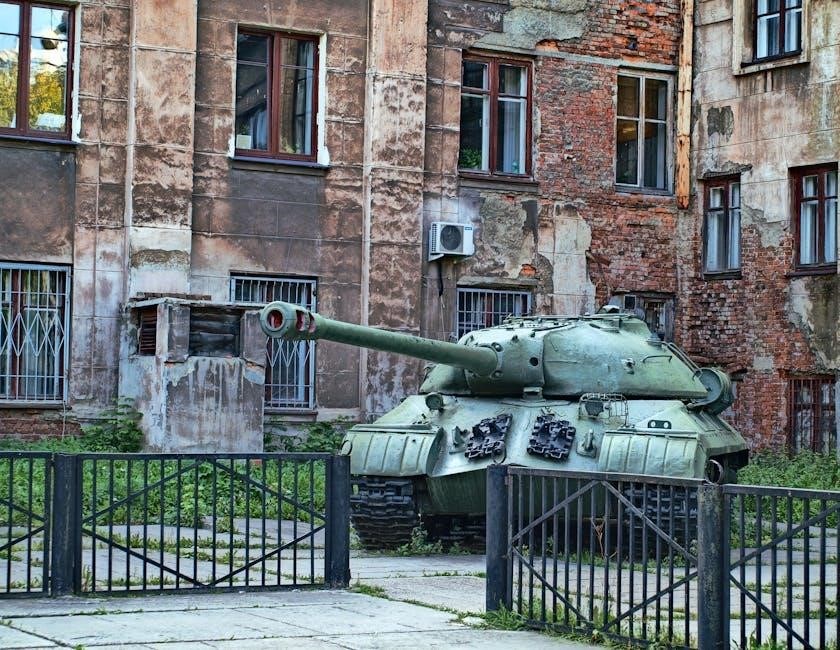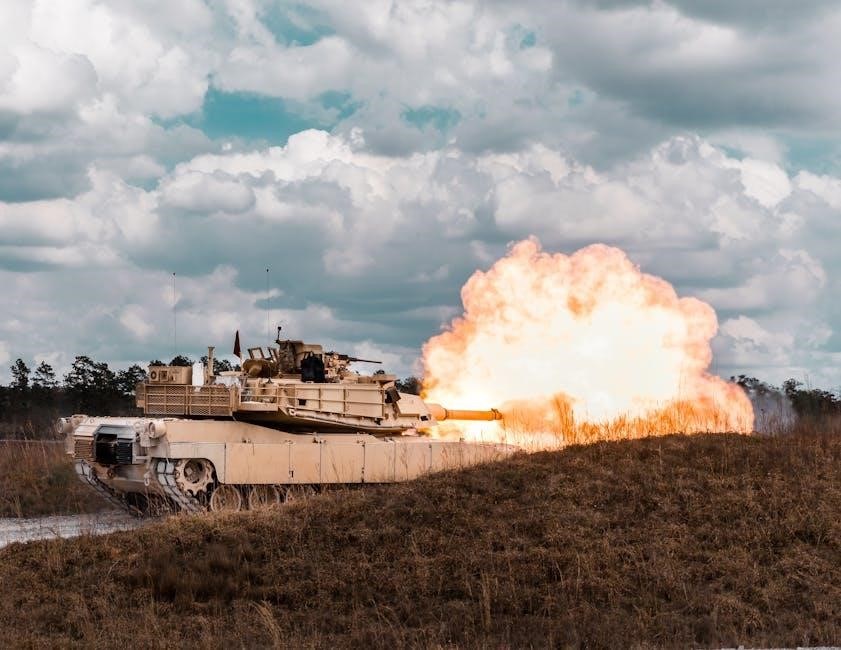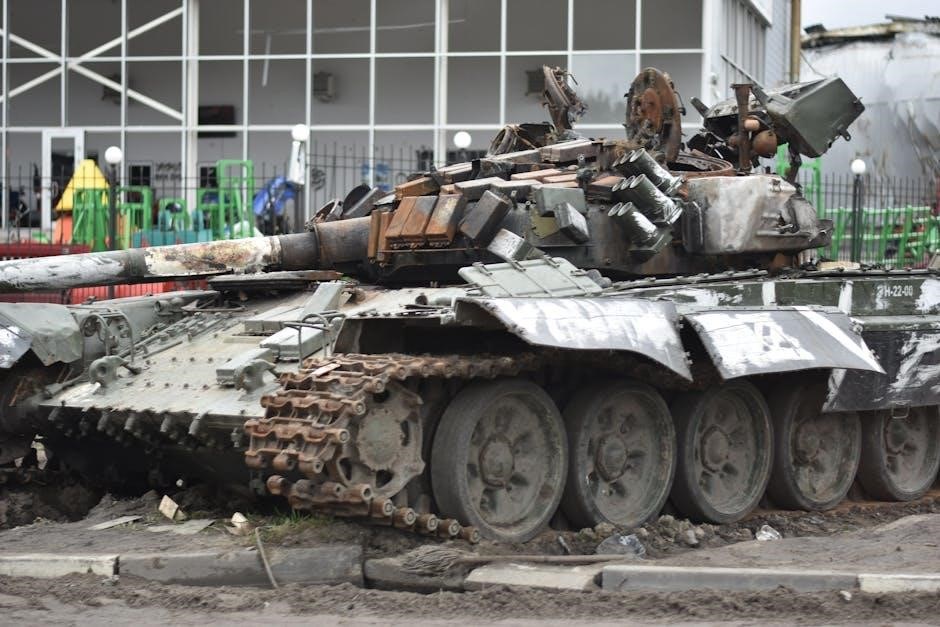French anti-tank artillery played a significant role in World War II, with the 47mm Mle 1937 being a notable example, and information on this topic can be found in various pdf documents and online resources available today․
Overview of the 47mm Mle 1937

The 47mm Mle 1937 was a French anti-tank gun designed to counter the growing threat of armored vehicles on the battlefield․ According to various pdf documents, this gun was considered one of the best purpose-built anti-tank guns at the start of World War II․ The 47mm Mle 1937 had a reputation for being able to penetrate up to 72mm of armor at a distance of 1,000 meters, making it a formidable opponent on the battlefield․ Its design and capabilities were widely recognized, and it was used by the French military as a key component of their anti-tank defenses․ The gun’s performance and reliability made it a valuable asset, and its use continued throughout the war․ The 47mm Mle 1937 was also used by other countries, including Germany, which captured and reused many of these guns after the fall of France․ Overall, the 47mm Mle 1937 was an important part of French anti-tank artillery, and its legacy can still be seen in the development of modern anti-tank guns․ Its impact on the outcome of World War II was significant, and it remains an interesting topic of study for military historians and enthusiasts․

Development and Production of French Anti-Tank Guns
French anti-tank gun development began in the 1930s, with pdf documents showing production increasing steadily until 1940, focusing on designing effective guns․
History of the 75mm Mle 1897
The 75mm Mle 1897 was a French field gun that played a significant role in both World War I and World War II, with its history and development well-documented in various pdf documents and online resources․ The gun was initially designed in the late 19th century and was widely used by the French military during World War I․ Its versatility and effectiveness made it a popular choice for many countries, and it was used in various conflicts around the world․ The 75mm Mle 1897 was also used as an anti-tank gun, although it was not specifically designed for this purpose․ Despite its age, the gun remained in service with the French military until the outbreak of World War II, and its history is still studied by military historians today․ The gun’s design and development are a testament to the ingenuity and innovation of the French military during this period, and its legacy continues to be felt in the modern era․ Many pdf documents and online resources are available for those interested in learning more about the 75mm Mle 1897 and its history․

Characteristics of French Anti-Tank Artillery
French anti-tank artillery had unique features and capabilities, with details available in various online pdf documents and resources for further study and analysis purposes always․
Features of the 47mm Mle 1937
The 47mm Mle 1937 was a notable example of French anti-tank artillery, with several key features that made it an effective weapon․ According to various online resources, including pdf documents, the 47mm Mle 1937 had a caliber of 47mm and a length of 50 calibers․ It was also relatively lightweight, making it easy to transport and maneuver on the battlefield․ The gun had a muzzle velocity of around 850 meters per second, and was capable of penetrating up to 72mm of armor at a range of 1000 meters․ These features made the 47mm Mle 1937 a highly effective anti-tank gun, and it was widely used by the French military during World War II․ The gun’s design and capabilities are still studied by military historians and enthusiasts today, and can be found in various online resources, including pdf documents and articles․ Overall, the 47mm Mle 1937 was an important part of French anti-tank artillery, and its features and capabilities continue to be of interest to historians and military enthusiasts․ With its impressive performance and maneuverability, the 47mm Mle 1937 remains a significant example of French military technology during World War II․

Deployment and Use of French Anti-Tank Artillery
French anti-tank artillery was deployed in various battles and used by different units, with strategies and tactics outlined in pdf documents and online resources available for study and review purposes only today․
Tactical Deployment of French Anti-Tank Guns
The tactical deployment of French anti-tank guns involved careful planning and execution, with considerations given to terrain, enemy movements, and available resources․ According to various pdf documents and online resources, French commanders would often deploy anti-tank guns in strategic locations, such as hills, ridges, and other high ground, to maximize their effectiveness․ The guns would be positioned to cover likely enemy approach routes, and would be supported by infantry and other units to provide protection and additional firepower․ The French also developed tactics for the use of anti-tank guns in conjunction with other weapons, such as artillery and machine guns, to create a layered defense against enemy armor․ These tactics and strategies are still studied by military historians and strategists today, and can be found in detail in various pdf documents and online resources․ By examining the tactical deployment of French anti-tank guns, researchers can gain a better understanding of the military strategies and tactics of the time, and how they contributed to the outcome of battles and campaigns․
